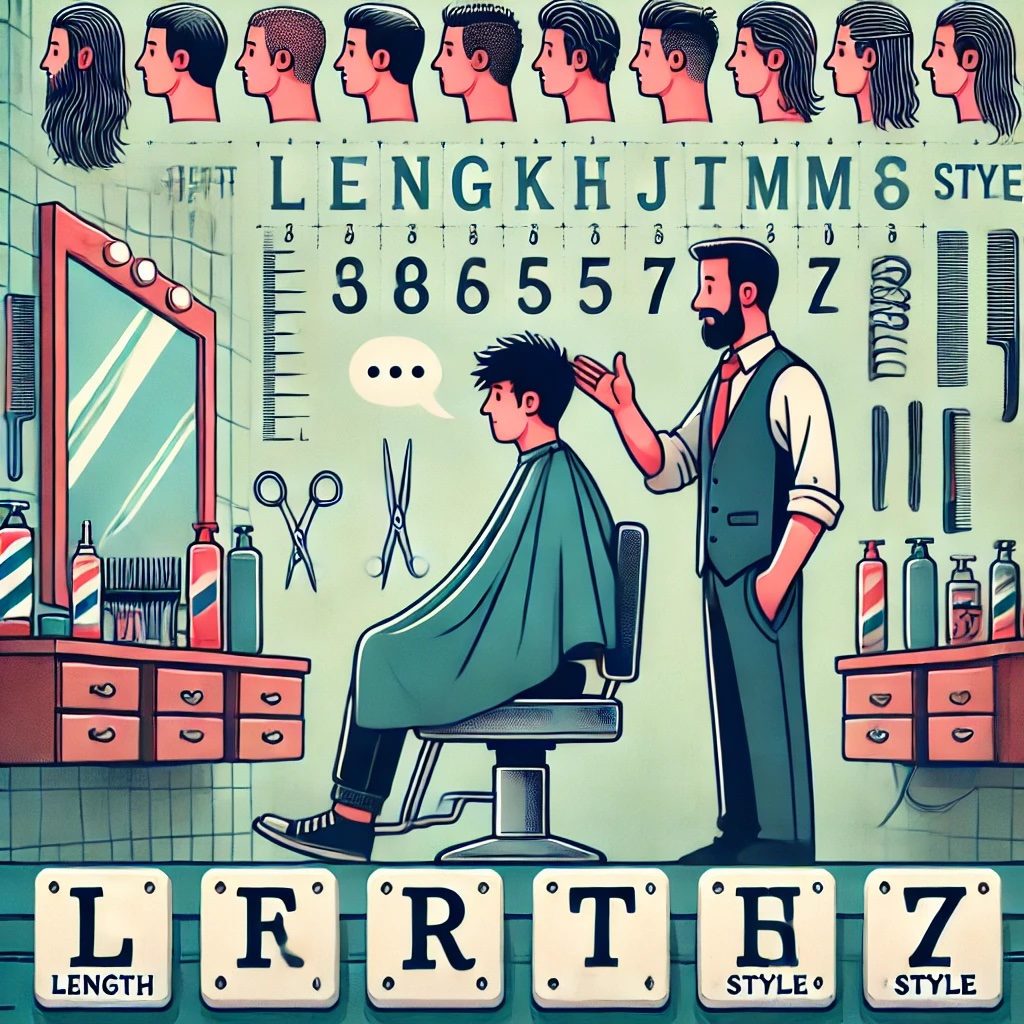General Tips for Communicating with Your Barber
- Be Specific About Length: Show the barber with your fingers how much you want trimmed (e.g., "just half an inch" or "1 inch off the ends").
- Describe the Shape: If you want to keep the current shape or layers, tell them that you want to maintain the shape but just clean up the ends.
- Mention Problem Areas: If there are any split ends or areas that need a little more attention, mention those specifically.
- Use Reference Terms: Terms like "dusting" or "light trim" indicate you want very little cut, mainly to tidy up.
- Communicate Clearly About Volume: If you want to keep your hair thick and full, ask the barber not to take off too much bulk.
- Bring a Photo: If there’s a specific look you want, a photo can be very helpful for the barber to understand your preference.
Key Terms and Phrases to Use at the Barber Shop
Using the right terminology can help the barber understand your desired outcome more clearly. Here are some common terms to use:
- Trim: Indicates you want a small amount cut off, just to clean up the ends. For example, “I’d like a trim, just half an inch off the ends.”
- Dusting: Refers to cutting off the very tips to remove split ends without affecting the length. For example, “I’d like just a dusting to get rid of split ends.”
- Blunt Cut: Means cutting the hair straight across, which keeps the ends looking thick and full. For example, “I’d like a blunt cut, just trimming the ends to keep them healthy.”
- Layers: Helps with volume and movement. If you have layers and want to maintain them, say, “Keep the layers, just trim them up.”
- Texturize: Refers to thinning or reducing bulk in thick hair. If you want your hair thinned, you can say, “Can you texturize a bit to reduce the bulk?”
- Point Cutting: A technique to soften the ends, giving a more natural look. You can say, “Please use point cutting for a softer finish.”
- Leave the Length: If you don’t want to lose much length, emphasize this by saying, “Leave the length, just shape it a bit.”
- Shape Up: To neaten the style without significantly changing it. For example, “I just need a shape-up to clean the style but keep the length.”
- Taper: Refers to gradually reducing the length at the sides or back for a more blended look. For example, “I want the sides tapered but keep the top long.”
- Avoid Thinning: If you don’t want your hair thinned, say, “Please don’t thin out my hair.”
Additional Terms to Consider
Here are some more advanced terms you might find helpful when discussing your haircut:
- Under Cut: A style where the hair underneath is cut shorter than the top layer. For example, “I want an undercut, but keep the top long.”
- Fade: Gradually cutting the hair shorter towards the neck and sides, usually used for shorter haircuts. You can specify “low fade,” “mid fade,” or “high fade” depending on where you want the fade to start.
- Blend: Used to describe the seamless transition between different lengths of hair. For example, “Blend the sides into the top for a more natural look.”
- Thinning Shears: Scissors used to reduce volume without changing the overall length. If you want to reduce bulk, you can ask, “Can you use thinning shears to take out some bulk?”
- Disconnected: A style where different sections of the hair don’t blend together (e.g., long top with very short sides). For example, “I want the top longer and disconnected from the sides.”
- Clean Up: For a slight trim or shaping without altering the style significantly. For example, “I just want a clean-up around the edges.”
- Choppy Layers: For a more textured and tousled look. For example, “I’d like some choppy layers to add more movement.”
- Textured Cut: A cut that uses various techniques to add more movement and definition. For example, “Can you add some texture to give my hair more dimension?”
- Fringe: Refers to bangs or the front section of hair. You can specify “long fringe” or “short fringe” if you want to keep or adjust it.
- Shape the Back/Sides: If you want to maintain the overall length but just clean up specific areas. For example, “Just shape up the back and sides without taking off length.”
Conclusion
By using these terms and being clear with your barber about your desired style and length, you can ensure you get the perfect cut without any surprises. Don’t be afraid to speak up and ask questions if you’re unsure about anything during your appointment. A good barber will appreciate your input and work with you to achieve the look you want.



